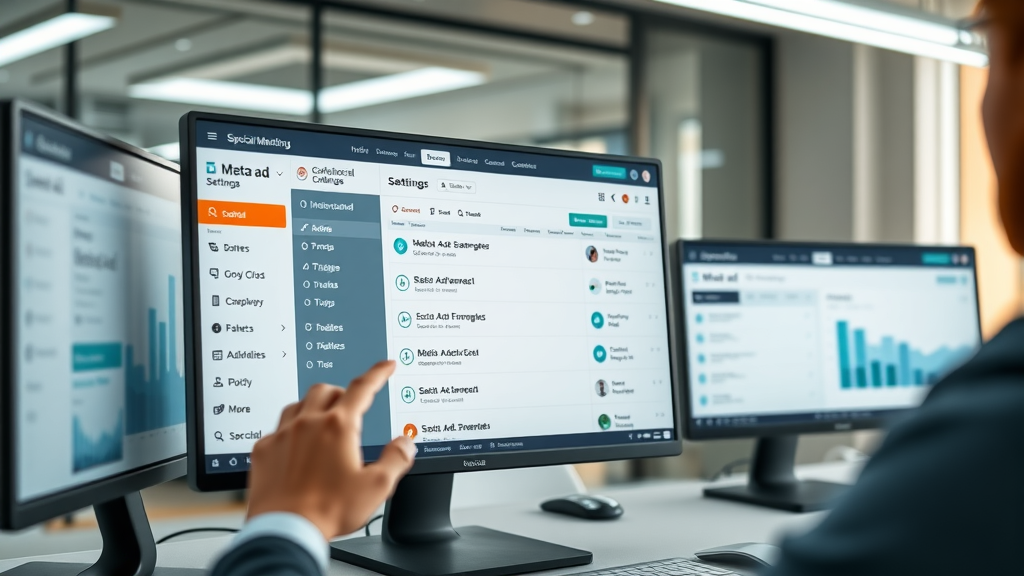Did you know over 80% of Facebook pages see little to no growth in their first year? It’s not just about luck—most business owners miss out on simple, high-impact tactics that could skyrocket their reach and engagement. This guide will reveal step-by-step strategies proven to grow your Facebook page organically and fast, helping small businesses and content creators maximize organic reach and engagement.Key Takeaways: How to Grow Facebook Page EfficientlyUnlock the secrets to increase organic reach on your Facebook pageUnderstand how to optimize your business page brandingLeverage Facebook groups, ads, and news feed tacticsDiscover effective Facebook post formats for maximum engagementGain practical, actionable advice for small business and entrepreneursWhat You’ll Learn in This Guide to Grow Facebook PageStep-by-step strategies to grow your Facebook page fastBest practices for organic and paid growthHow to turn insights into practical marketing strategiesThe role of Facebook groups, stories, and live videosAnswers to the top People Also Ask questionsA Surprising Truth: Why Most Struggle to Grow Facebook Page OrganicallyMost business owners struggle to grow their Facebook page organically because organic reach has declined sharply in recent years due to frequent updates in the Facebook news feed algorithm. Facebook regularly updates its news feed algorithm to prioritize authentic engagement and quality content, causing business pages with sales-heavy or low-engagement Facebook posts to often get buried in the news feed, thereby limiting their organic reach and overall Facebook page growth. Understanding organic reach—the number of people who see your Facebook posts without paid promotion—is crucial for effective Facebook page organic growth and maximizing your Facebook page's visibility. Many think simply posting more often will solve the problem, but without the right mix of timing, content type, and community engagement, efforts can fall flat.As a result, countless small businesses invest their limited time and budget into Facebook strategies that lead to frustration and little payoff. Many small business owners have not fully optimized their business page, lack consistent branding, or overlook key engagement signals that boost visibility on the news feed. Additionally, failing to leverage Facebook stories, live videos, and Facebook groups leaves major growth potential untapped for your Facebook page's organic growth.Understanding the nuances of social media algorithms and how post timing affects visibility is crucial for maximizing your Facebook page's reach. If you're interested in how content lifespan impacts engagement across platforms, explore this in-depth look at social media post lifespan and what top marketers do differently to sustain growth and visibility.Understanding the Basics: What Does It Mean to Grow Facebook Page?Definitions: Facebook page, business page, and page organic growthA Facebook page is a public profile made for businesses, organizations, or public figures to connect with an audience. A business page is specifically set up for companies or brands to share updates, engage with customers, and promote products or services. Organic growth means increasing your Facebook page’s reach and followers without paid advertising. The goal is to create valuable content and interactions that inspire people to engage and share, causing your audience to grow naturally over time.The science behind organic reach and Facebook’s news feedOrganic reach is heavily influenced by Facebook’s news feed algorithm, which determines which Facebook posts appear to your audience and how often they engage with your business page. The more engaging your posts—meaning they generate likes, comments, or shares—the more they’re shown to people. The algorithm also favors posts from pages that users regularly interact with. This means your facebook posts need to be both interesting and relevant. Understanding the science behind it enables you to post content that gets prioritized, helping your business page grow faster.Why organic strategies matter before using Facebook adsBuilding a strong organic presence on your Facebook business page is essential before investing in Facebook ads to maximize your overall marketing strategy and improve ad performance. When your page regularly posts valuable content and has an engaged community, your ads are more effective and credible. Relying solely on paid reach without organic engagement can make your efforts expensive and unsustainable. Organic strategies lay the foundation for trust, helping you maximize your ad spend later for even greater Facebook page growth.How to Grow Facebook Page: Setting Up for SuccessOptimizing your Facebook business page for fast growthTo grow your Facebook page rapidly and organically, start by fully optimizing your Facebook business page with relevant keywords, compelling content, and strategic use of Facebook business tools to boost your page organic reach and overall Facebook page performance. This includes picking a memorable username, uploading a high-quality profile picture and cover image, and filling out every contact field and description with relevant keywords. Use a compelling call-to-action button (like “Contact Us” or “Shop Now”) to guide visitors. An optimized page signals professionalism and makes it easy for potential followers to engage, helping you reach more people organically in the news feed.Branding your Facebook page for small business appealBranding your Facebook business page involves more than just a logo—it's about creating a consistent visual identity and messaging style across all your Facebook posts to attract your target audience. Use your brand’s colors, fonts, and tone of voice in profile images, cover photos, and every piece of content. For a small business, authentic branding helps you stand out and build trust with your ideal target audience. Make sure your content feels like a natural extension of your business, not just a random collection of posts.Creating a consistent and credible page presenceConsistency in your Facebook business page posting schedule and content quality is essential for credibility. Aim to post regularly—at least 3-5 times per week—using a mix of post types (photos, videos, questions, blog posts). Respond quickly to comments and messages, and keep your information (address, hours, and links) up to date. A consistent presence helps you build momentum and positions your brand as reliable, which is key to organic Facebook page growth."Consistency in branding and content is the foundation to effectively grow your Facebook page." – Social Media Marketing ExpertMastering Facebook Posts: Content that Grows Your Facebook PageTypes of Facebook posts that drive engagement rateThe type of post you share can make or break your engagement rate. To maximize likes, comments, and shares, use a balanced mix of photo posts, videos, link shares, and interactive status updates. Image posts and short videos grab attention quickly and perform well in the news feed, while thoughtful questions or polls can spark conversations. For business owners, mixing in customer testimonials, behind-the-scenes glimpses, and value-packed tips ensures your posts stay fresh and relevant, helping to grow your Facebook page faster.Facebook stories, live videos, and their role in organic reachFacebook stories and live videos appear prominently at the top of the news feed, offering excellent organic reach and visibility to grow your Facebook page organically and increase engagement rate. Stories allow you to create quick, engaging content that disappears after 24 hours, driving urgency and encouraging frequent visits. Meanwhile, Facebook Live broadcasts reach more of your audience in real-time and often generate higher engagement rates. By using stories and live videos consistently, you make your business page more dynamic and appealing, supporting fast organic growth.Facebook post timing: News feed algorithms and visibility tipsWhen you post is just as important as what you post. Analyze your audience insights to find the best time to post—generally, afternoons and evenings work best for image posts, while live videos see higher viewership on weekends. Posting when your followers are most active boosts your content’s chance of being seen. For every post, include a clear call to action and track engagement to refine your posting strategy and accelerate growth.Post TypeEngagement LevelBest Time to PostExtra TipsImage PostsHighAfternoons & EveningsUse bright visuals, add CTAsLive VideosVery HighEvenings/WeekendsAnnounce ahead for more viewersLink SharesMediumMorning/NoonTease content in captionsOrganic Reach: Proven Tactics to Grow Facebook Page OrganicallyLeveraging Facebook group involvement to grow your Facebook pageFacebook groups are powerful communities that extend your Facebook page’s organic reach by fostering meaningful discussions and engagement beyond your current followers, making them essential for any Facebook marketing strategy. By joining and engaging with relevant groups in your industry or local community, you can build relationships, share valuable insights, and gently promote your Facebook page. Sharing expert tips, responding to group questions, or hosting live Q&A sessions within a group can drive curious members to your business page organically. Remember, the key is to deliver value first and self-promote second.Maximizing engagement rate with user-generated contentUser-generated content (UGC)—like reviews, testimonials, and photos customers share—boosts your credibility and dramatically increases engagement rate. Encourage your followers to tag your business, share their experiences on your page, or join community contests. Showcasing UGC lets people see real customers interacting with your business, making it easier for new followers to trust and connect with your brand. Highlight top community posts, run hashtag challenges, or offer rewards for participation.Algorithms and the news feed: How to stay visible organicallyFacebook’s news feed prioritizes posts that spark conversations and retain attention. To stay visible, focus on high-quality posts that invite comments and shares. Reply to comments quickly, and use polls or live videos to boost real-time engagement. Consistent page activity encourages frequent visits—both from your followers and new audiences via the group and organic discovery. Adapting your strategy to algorithm changes helps you continually grow your Facebook page organically.Connect your Facebook page to relevant Facebook groupsEncourage customers to tag your business page in their postsHost Facebook live or Q&A to boost page organic reachPaid Strategies: When and How to Use Facebook Ads to Grow Facebook PageCrafting effective Facebook ads for your business pageOnce you have solid organic tactics in place, amplifying your Facebook page with targeted Facebook ads can significantly accelerate your page growth, improve your marketing strategy, and boost your engagement rate. Effective ads start with a clear objective—like increasing page likes, post engagement, or driving traffic. Use eye-catching visuals, concise copy, and a strong call-to-action. Test different formats, such as video or carousel ads, and monitor the results closely through Facebook Insights. The best Facebook ads blend into your organic content style, maintaining authenticity and boosting both reach and credibility.Budgeting: Small business solutions for optimal ROISmall businesses don’t need huge budgets to see results with Facebook ads. Start with a modest daily spend to test creative and audience targeting. Track the cost per result (such as page likes or comments) and adjust your budget towards the most effective ads. It’s important not to overspend early—focus on learning which audiences respond best so that each dollar delivers a higher return on investment (ROI). Continuous optimization ensures your Facebook ad strategy remains sustainable as you grow your page.Facebook ad targeting: Grow your Facebook page with precisionFacebook’s powerful ad targeting lets you reach people by interests, demographics, behaviors, and even past engagement, helping you grow your Facebook page with precision. Build custom audiences from visitors to your website, email subscribers, or those who have interacted with your page. Refining your ad targeting helps you attract the followers most likely to become advocates of your page, increasing both likes and long-term engagement rate. Combining precise targeting with compelling creative is essential for quick, efficient growth.Ad TypeAverage Cost per ResultBest For GrowingTarget AudiencePage Likes Ad$0.50 – $2.00Building new fans quicklyInterest-basedPost Engagement$0.05 – $0.20Increasing likes/commentsPast engagersSmart Use of Facebook Business Tools to Grow Your Facebook PageInsights, analytics, and tracking Facebook post performanceUse Facebook Insights to analyze which Facebook posts generate the highest engagement rate and identify the best times to post for maximum organic reach and Facebook page organic growth. Analyzing data such as likes, shares, reach, and comments reveals what your followers care about most. Adjust your content according to what works best. Businesses that regularly review analytics grow their Facebook page faster—data-driven decisions help you spot trends, avoid ineffective content, and seize new growth opportunities.Using Facebook business page features – scheduling, messaging, and auto-repliesFacebook offers many business tools to streamline your page management. Scheduling posts helps you maintain a consistent posting rhythm, even during busy times. Enable messaging and auto-reply features so you never miss an inquiry, and your audience always gets a quick response. Organize your content calendar around holidays, events, or promotions to keep your page active and relevant. Smart use of these tools saves time and strengthens your brand’s reliability.Community Building: Facebook Groups and Collaborations to Grow Facebook PageCreating and moderating successful Facebook groupsBuilding your own Facebook group or joining others helps you create a loyal community around your brand. A successful group starts with clear rules, engaging content, and active moderation. Encourage open discussion and offer exclusive value — such as tips, live training, or early product announcements. Groups foster strong relationships, which naturally drives growth for your connected Facebook page, as members are more likely to recommend it to others.Collaborating with influencers to boost your Facebook page organic reachCollaborating with relevant influencers in your field gives your business page instant credibility and extends its organic reach to new networks. Choose influencers whose audience aligns with your target customers, and organize joint live sessions, post takeovers, or promotional contests. Influencer partnerships can quickly grow your Facebook page by bringing in fresh audiences with an already-established interest in your product or message."Facebook groups are where real page engagement and loyalty are born." – Online Community StrategistHarnessing Facebook Live and Videos to Grow Facebook PageWhy live videos and Facebook live outperform standard postsFacebook live videos capture attention like nothing else and are a key part of any effective Facebook marketing strategy to grow your Facebook page organically. Facebook’s algorithm pushes live broadcasts to the top of the news feed, and these real-time sessions spark immediate engagement. Viewers can comment, ask questions, and react during the stream, increasing your overall reach and building a stronger relationship with your followers. Compared to standard posts, live videos typically receive more comments, shares, and follow-up views.Step-by-step: Going live and promoting your broadcast to grow your Facebook pageTo get started, plan your topic and schedule your Facebook Live session in advance. Announce it across your other social media and within relevant groups for maximum turnout. When going live, introduce yourself, encourage viewers to ask questions, and interact throughout the broadcast. Afterward, save the recording so people who missed it can watch later. Regular Facebook Live sessions help dramatically grow your page’s organic following and nurture a loyal audience.Leveraging Facebook Stories and Ephemeral Content to Grow Facebook PageCreating Facebook stories: Best practices for maximum reachFacebook stories are an engaging way to connect with your audience through quick, visual updates. Use bright, brand-consistent graphics and concise text to make your stories stand out. Include interactive elements like polls or “swipe up” links to get viewers involved. Regularly updating your story keeps your business page top of mind for followers, as stories appear first in the app and can be viewed multiple times a day.Using stories to drive traffic from the news feed to your business pageFeature your most important updates, promotions, or behind-the-scenes moments in your Facebook stories. Always direct viewers to your main page with stickers, links, or calls to action. Respond to those who engage with your stories, building a sense of community and making them more likely to follow and interact with your page posts. Combining stories with well-timed organic and paid campaigns accelerates your page’s growth trajectory.Maximizing Your Marketing Strategy for Long-Term Facebook Page GrowthSetting goals and KPIs for Facebook page organic reachEstablish clear goals for your Facebook page, such as increasing likes, boosting engagement rate, or driving sales. Track key performance indicators (KPIs) like post reach, comment counts, and audience growth. Regularly review your progress to spot trends and refine your approach. Setting and monitoring goals helps keep your efforts focused, ensuring that both organic and paid strategies contribute to long-term growth.Mixing organic and paid growth for a balanced marketing strategyCombine organic efforts with modest, targeted Facebook ads campaigns to gain the best of both worlds and maximize your Facebook page growth. Use organic content to build engagement and trust, and deploy Facebook ads when you want to boost visibility or launch time-sensitive promotions. This blended approach protects your marketing investment and helps you adapt quickly when Facebook’s algorithm changes.Refreshing your Facebook marketing strategy with new trendsStay updated on the latest social media marketing trends by following industry blogs, participating in webinars, and experimenting with new features. As Facebook introduces updates, be among the first to try them out—this positions your business page as innovative and active, keeping your audience engaged and attracting new followers.Case Studies: Small Business Success Stories Growing Facebook Page FastHow local businesses achieved rapid Facebook page growthMany local businesses have turned modest Facebook pages into vibrant communities in just a few months. By consistently sharing customer spotlights, exclusive deals, and live behind-the-scenes content, they tripled their follower counts and engagement rates. Some used Facebook groups to host local events or partner with nearby influencers, creating word-of-mouth buzz that organically grew their business page while also increasing sales.Q&A with a Facebook page expert on best marketing strategyQ: What’s the secret to growing a business page fast?A: “Be consistent, listen to your followers, and never stop testing new types of Facebook posts. Combine regular live videos, authentic stories, and targeted group collaborations for best results. Track your progress using Facebook Insights to keep growth on track.”Common Pitfalls: Mistakes to Avoid When Trying to Grow Facebook PageIgnoring Facebook insights or analyticsNeglecting engagement rate and feedbackOverusing sales-focused Facebook posts vs. building valueFailing to update Facebook page information regularlyTracking Progress: Using Analytics to Measure Your Facebook Page GrowthKey metrics for business page and Facebook post performanceRegularly check your business page insights to monitor growth. Core metrics include page likes, post reach, engagement rate, comment volume, and click-through rates on links. Reviewing which type of post brings in the highest numbers can guide your future content planning. Businesses that adjust based on analytics experience steady, reliable Facebook page organic growth.Adapting your approach to keep organic reach increasingGrowth is not a set-and-forget process. Assess your analytics weekly, and tweak your strategies—change your posting times, try new formats like live videos or stories, or experiment with sponsored ads. Staying flexible and data-driven ensures your Facebook page stays on an upward path.People Also Ask: Your Top Facebook Page Growth Questions AnsweredHow can I make my Facebook page grow faster?To grow your Facebook page faster, consistently share high-quality content, interact promptly with followers, use engaging post types like live videos and stories, and participate in relevant Facebook groups. Combine organic tactics with targeted Facebook ads to speed up growth while maintaining authenticity.How do I get 1000 followers on my Facebook page?Reach 1000 followers by inviting friends, leveraging groups, hosting engaging live sessions, sharing user-generated content, and actively promoting your page on other social media channels. Authentic stories, contests, and regular interaction make your page irresistible for new followers.What is the 3 second rule on Facebook?The 3 second rule means you have just three seconds to grab viewers’ attention as they scroll through the news feed. Use eye-catching visuals, bold text, and clear calls to action in your Facebook posts and videos to hold their interest from the start.How do I attract people to my Facebook page?Attract people by offering value—share tips, advice, exclusive promotions, or behind-the-scenes glimpses. Actively interact with followers, run fun contests, and join local or niche Facebook groups to drive interest and build trust, turning casual viewers into dedicated fans.FAQs: Grow Facebook Page Beyond ExpectationsHow often should I post to grow my Facebook page?Aim to post at least three to five times per week. Regular posting keeps your page active and your audience engaged, but always prioritize quality over quantity by sharing valuable, relevant content each time.What type of content works best for small business pages?Photos, short videos, customer testimonials, success stories, and behind-the-scenes updates perform best. Content highlighting community involvement and special offers is especially powerful for small businesses seeking to build local buzz.Is it better to use a Facebook business page or group for marketing?Both offer advantages: a business page is essential for branding and promotion, while groups foster closer communities and sustained interaction. Use both together—tie your group to your page for optimal marketing strategy.How can I measure engagement rate and organic reach accurately?Use Facebook Insights to track likes, shares, comments, and the number of people reached. Divide post engagement actions by total reach to get your engagement rate percentage, comparing across different post types for insight.Final Thoughts: Start Your Journey to Grow Facebook Page TodayGrowing your Facebook page fast takes a smart marketing strategy, consistent action, and a willingness to adapt to changes in the news feed and Facebook algorithm. Ready for the next step? If you need help growing your Facebook page, give us a call. 207-710-1449If you’re eager to take your Facebook growth even further, consider expanding your marketing toolkit with proven strategies that drive business success across all digital channels. Discover a wealth of actionable marketing tips and advanced tactics in our comprehensive guide on marketing strategies to grow your business. Whether you’re refining your social media approach or looking to boost your overall online presence, these insights will help you unlock new levels of engagement and sustainable growth for your brand.Contact Us: Expert Help to Grow Facebook PageLooking for personalized advice or hands-on help? Connect with our team of Facebook growth experts today and unlock your business’s potential!To further enhance your understanding of effective Facebook page growth strategies, consider exploring the following resources:“10 Ways to Grow Your Facebook Following”: This article provides practical tips on increasing your Facebook page’s reach and engagement, including strategies like sharing original content and tagging your page from your personal profile. (socialmediaexaminer.com)“How to Grow Your Facebook Audience”: This guide offers insights into audience engagement techniques, such as participating in Facebook groups and utilizing Facebook Live to connect with your community. (uschamber.com)By implementing the strategies outlined in these resources, you can effectively expand your Facebook page’s reach and foster a more engaged audience.






 Add Row
Add Row  Add
Add 








Write A Comment